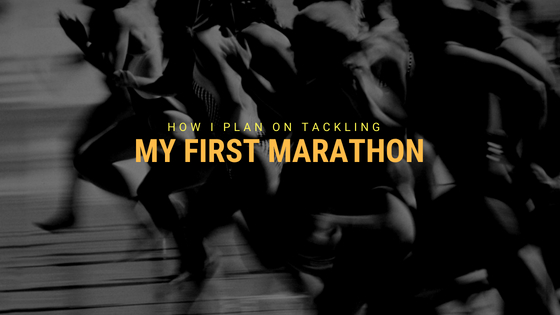It is exactly 67 days until I run my first marathon in Baltimore, and I’m very excited, but I also know that as the countdown keeps creeping along I’m going to have to keep working harder and adjusting the plan to prepare for the challenges I’ll probably run into along the way. I haven’t been running very long (two years in August), so I’m trying to set reasonable goals. Here are some of the ones I’ve decided on so far:
Steady-As-She-Goes
When I first decided to do this, I was certain that I should be working off of The Plan. I wasn’t sure what The Plan was, but I thought that the only way I’d succeed was through meticulously scheduling workouts and over-analyzing changes in temperature and pace. I figured there would probably be spreadsheets involved.
Then I remembered who I am—that I chose this race not strategically, but because the course, in passing through the Baltimore Zoo, involves an encounter with penguins. I remembered that my real goal is just finishing, and realized that I don’t need breaking-the-2-hour-wall analytics in order to make that happen. All I really need are endurance, mental strength, and the ability to withstand hitting pavement many times in a row. (It seems silly breaking it down like that, but it’s essentially true and gives me a lot of relief.)
So I’m emphasizing flexibility, and though I’m trying to line my total mileage up with a 16-week plan that slowly works from 25-50 miles per week (which I chose because I have a solid base from my half in April), I’m not committed to how I reach those miles daily as long as some part of my week involves speed work (hilly repeats or Yasso 800s) and some part involves long runs.
I’m sure some more calculated and experienced runners would stick to a more regimented plan, but one of the biggest lessons I’ve learned while running is that overthinking tends to be my enemy. Slow and steady may not win the Baltimore Marathon, but it gives me peace of mind.
All-Embracing Racing
At first, as temperatures began to reach the 80s and 90s, I tried to stick to early morning runs. When I did have to go in the middle of the day, or after lifting, I got frustrated when I ran with slower splits and felt more exhausted in the heat. I thought that if I didn’t practice like I intended to perform, I wouldn’t reach my goals.
Then I realized that was a bit impatient.
Now, though I prefer cooler runs and don’t go during heat or air quality advisory times, I embrace hot and post-lift runs because I recognize that I’m training my body not to perform perfectly in perfect conditions, but instead to adjust to uncomfortable conditions, like heat or tiredness, and keep going anyway.
Also, because I know that increasing mileage drastically is tough on my shins, I’m using cross-training to add intensity and well-roundedness without overreaching my weekly mileage. I try to lift three times a week for a little over an hour, sometimes adding low-impact cardio like stationary biking.
Though I definitely put the most focus on quad and hamstring-building moves like squats, deadlifts, and lunges, I’ve noticed that I feel stronger running when I also include upper-body and an abdominal workout that’s a fusion of what we used to do in cross-country and moves I learned from friends. I try to make lifting more fun and purposeful by building my workout around other people’s favorite exercises that I learned from going to the gym with them, for example by doing one-leg RDLs in honor of a friend named Amanda who taught me how to use free weights and told me those was her favorite.
Smiling like Mo
I can be competitive, but not enough to train for a marathon if I wasn’t able to find joy in it, especially as someone who’s far from an expert on running. That’s the sentiment behind my admiration for Sir Mo Farah, because his average pace during his performance in the 2018 London Marathon being exactly twice as fast as my goal pace for my race makes him a role model purely in spirit. (We are also both bouncy runners with forefoot strikes, but that’s where the resemblance in our performance ends.)
Mo Farah is inspiring for me because of his relentless positivity, which is evident on his website or Twitter and in the film tribute to his career “Smile” made by Nike in 2017. His online presence is filled with joy and happiness for others. I want to channel that attitude by, rather than being stressed about my performance, starting my October race simply happy to be there.
A 2017 New York Times article called “Can Smiling While Exercising Improve Performance?” argues that scientifically sometimes yes, it can, but I’m not trying to pull a fast one on my physiology by forcing a neurological connection. Symbolically, I’m trying to make a habit of practicing positivity by thinking of why I run, the friends I’ve been lucky to spend time training with, and all of the wonderful adventures that are possible with 26.2 miles to explore.
I look forward to more smiles (even if they are sometimes forced) in the upcoming weeks, thanks for reading my blog post!


